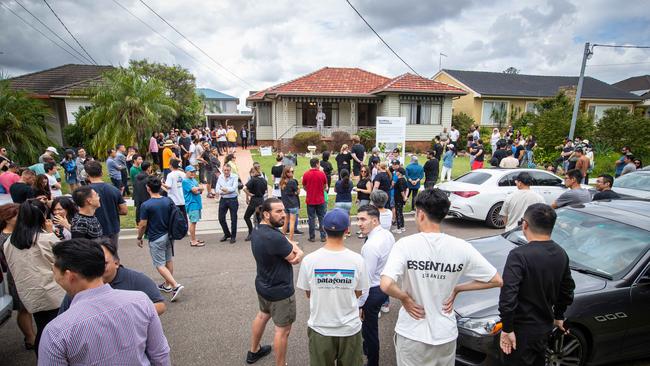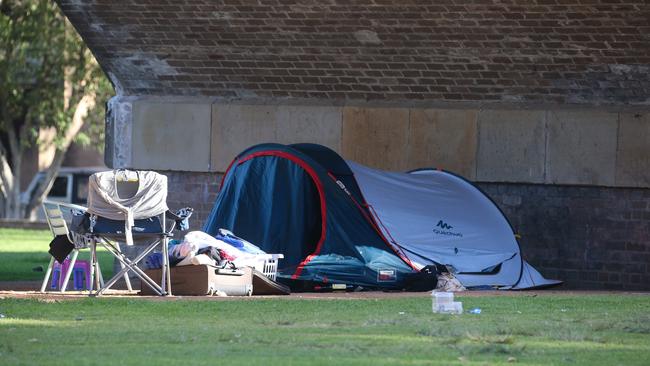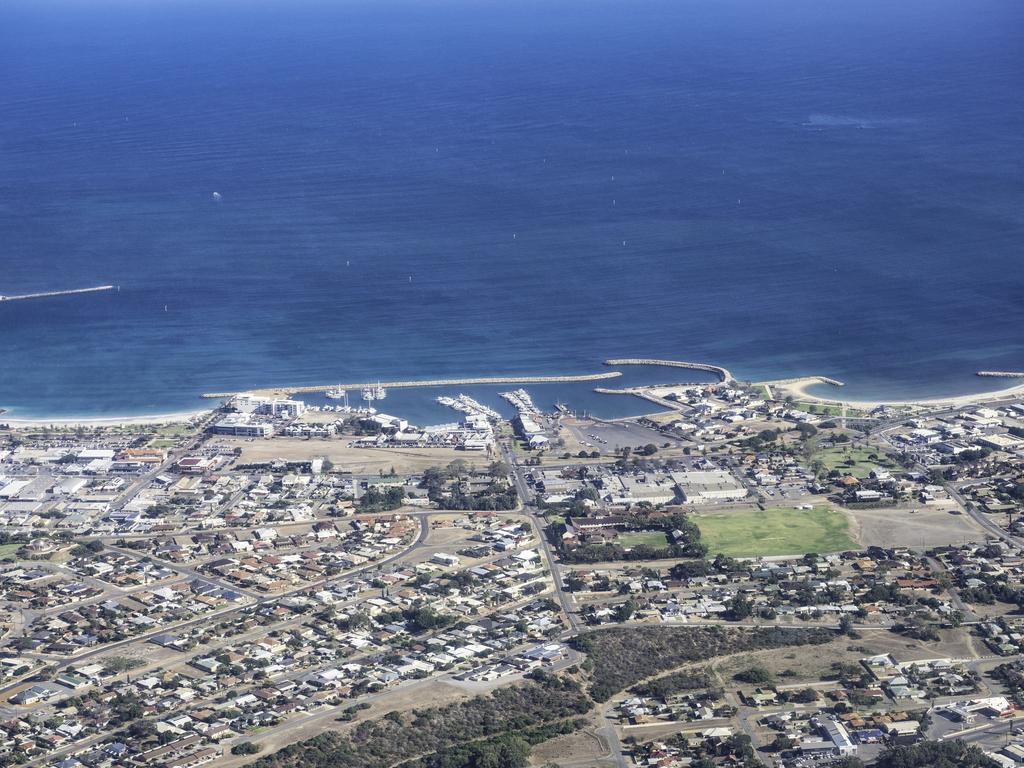Australia’s population dilemma and the ‘colossal own goal’ of weaponised migration
The federal opposition claims the government is running a ‘Big Australia’ policy by stealth. The business lobby is aghast. Such politicisation is an act of self-harm. But what exactly is Labor going to do about it?

The thrum of politics has delayed the arrival of the Albanese government’s migration strategy. Amid local turbulence and global disorder, Labor is seeking a safe patch to land one of its pivotal policy responses this term that will be shaped by a compelling review.
Further delay is risky as housing and services come under pressure from a surprise population boomlet that could erode public support for importing foreigners. A record migrant inflow occurred after the border was reopened to foreign students and temporary workers almost two years ago. Net overseas migration was 453,000 in the year to March, driving world-leading population growth, way above the level planners expected in a post-pandemic catch-up.
Jim Chalmers takes refuge in a Treasury guesstimate that it would take until 2029-30 for cumulative migration to reach the level projected pre-pandemic under the Coalition; given the rush, the 400,000 migrant shortfall due to Covid – with the first migrant net outflow in 75 years in 2020-21, and two below trend years on either side – likely will be restored by year’s end.
Migration has revived consumer demand and kept the jobs market “tight and resilient”, according to the Australian Bureau of Statistics, despite the Reserve Bank of Australia’s dozen rate hikes; population growth has ignited home prices, rents and inflation, meaning rates stay higher for longer.
At her first public event as RBA governor, Michele Bullock conceded it was becoming more difficult to bring inflation under control. “We’ve just got shock, after shock, after shock,” she said on Wednesday. The population surge is one of them.
The federal opposition claims the government is running a “Big Australia” policy by stealth. The business lobby is aghast. Such politicisation is an act of self-harm: here comes the immigration wedge. A misstep on migration by Labor would deliver the Coalition an opportunity – one it does not deserve given its nine years of ad hoc custody and policy drift bequeathed an inglorious mess.
‘Our economy has become reliant on overseas residents with work rights, rather than the standard path of permanent migration’ - Martin Parkinson
Home Affairs Minister Clare O’Neil asked Canberra’s former top bureaucrat, Martin Parkinson, to lead a review panel that included University of Adelaide law professor Joanna Howe and former senior Deloitte partner John Azarias. Reporting in March, it found a system that was demonstrably complex, slow, out-of-date, inconsistent and riddled with neglect, cruelties and perversities. “There was a problem under every rock we looked under,” Parkinson tells Inquirer. Each issue could not be dealt with in isolation, such were the system’s interrelated defects, he says: “This is a 10-year rebuild. This is not something that you can do quickly because it is so badly broken.”
Administration has been run down. Parkinson points to failing IT systems, legal complexity, the incessant creation of new visa classes, a slide in capability and a lack of data about who’s here. Was the previous government overwhelmed by demand? No, replies Parkinson: “It was a deliberate decision to neglect the system.”
There were mistakes. Parkinson highlights freezing at $53,900 from July 2013 the temporary skilled migration income threshold, a wages floor. It may have been a blessing for employers but it turned the system on its head.

What had been a program based on skilled workers, bringing in 160,000 to 250,000 people a year, became a system awash with unskilled workers. In response to trade union pressure and the evidence of systemic abuses, Labor raised the TSMIT to $70,000 from July 1. Another flaw was the occupation skills lists underpinning the sponsorship programs; they were hopelessly out of date, lacking an evidence base – even “absurd”, as one business leader puts it.
The panel raised the need for comprehensive integrity measures in the visa system, in line with the findings of the rapid response review by Christine Nixon. Labor has been busy plugging holes, including for student visas and agents, but the ramshackle structure has enabled exploitation and crime, including human trafficking.
Such is the neglect of what should be a national asset that even a handful of rational changes would make a big difference. But given it’s a dynamic situation, with Australia competing for the world’s talent, reforms must be swift, substantial and logical, coupled with a vigilance that has been missing, except on the high-profile Operation Sovereign Borders to thwart arrivals by sea.
Business Council of Australia former chief executive Jennifer Westacott says in most cases people are not concerned a migrant will take their job. “Well-managed immigration is unambiguously good for the country,” she says. “It puts in place the jobs people need and the skills in place that the country needs to move forward. My concern about the politicisation of migration is that it will be a colossal own goal.”
Migration was a key lever in the BCA’s Seize the Moment, the policy cri de coeur that capped Westacott’s 12-year tenure, which ended last week. She says it’s in no one’s interest – including the trade union movement and the Coalition – to politicise migration.
Westacott is surprised when the union movement says it wants more advanced manufacturing and more investment and growth in renewables.
“If we really want to get some dynamism back into the economy, and if we’re not willing to bring in the skills for advanced manufacturing, I don’t know how we’re going to climb that mountain of getting diversification in the economy if you don’t diversify the skill base,” she says.
Parkinson says the panel deliberately spurned a review where there’s a long list of recommendations that the government could accept or reject, one by one. Instead, it outlined reform directions, a “mud map” for action, returning to first principles: What do we want from migration?
The panel boiled it down to five objectives. First, raising prosperity by lifting productivity, meeting labour supply needs and supporting exports. Second, enabling a fair labour market by complementing the jobs, wages and conditions of local workers. Third, “building a community of Australians”. Fourth, protecting Australia’s global interests. Fifth, providing a fast, efficient and fair system.
The task then was to identify how to achieve this, including guardrails to manage risk, with temporary migration the most pressing area of concern. What is paramount, says the former secretary of the departments of Prime Minister and Cabinet and Treasury, is “clarity about who can and cannot stay in Australia”.
“What we’ve done, without ever setting out to do it, and I’m sure if the Australian public had been asked they would not have agreed to it, is we’ve created a guest worker program, with a permanent underclass of people who are temporary migrants,” says Parkinson. “They have no pathways to permanency, they have no idea what their status is, but we also don’t force them to leave.”

According to Home Affairs, at the start of September there were 2.2 million people in the country on temporary visas with work rights, including 700,000 New Zealanders. “Our economy has become reliant on overseas residents with work rights, rather than the standard path of permanent migration,” says Parkinson. To improve permanency, we need more than the “blunt tool” of the current points system, which does a very poor job of discriminating in favour of the migrants we need to deliver maximum economic benefit and who will prosper here.
“In typical Australian fashion we think the rest of the world wants to come here,” Parkinson told a recent forum hosted by the Macquarie Business School. “But if you take a look, we have slid down dramatically the attractiveness rankings for the very best migrants in the world. They’re not interested in here now. When you look at the countries ranking ahead of us it should come as a real shock.”
But it’s the tail of temporary entrants wagging the policy dog. To rebalance the system, the panel proposed risk-based regulation of temporary labour, with three-tiers, “to achieve an appropriate balance between driving economic prosperity and preventing harm to migrants and local workers”. It’s a policy endorsed by the BCA.
The highest-skilled migrants and those earning a multiple of the average wage – which the panel says is “1.X times full-time average weekly ordinary time earnings” or about $98,000 a year – would face expedited screening. That would allow swift intracompany transfers of those with rare skills who come to work on projects without any intention of staying longer term.
The middle tier would be on a salary below the top threshold and above TSMIT. An intermediate effort for screening would align with our skills needs and involve consistency with the workforce plans developed through Jobs and Skills Australia; an appropriate market-based salary would be paid.
A lower-paid cohort would face all requirements of the mid-level group but its composition would be based on shortages identified by governments, business and unions; applications from this group would be highly scrutinised with increased post-arrival monitoring.
The review said all salary tiers would be indexed, while temporary migrants would be allowed to move to another employer (within the same industry or “job family”). Employer visa charges would be paid monthly, rather than upfront, to allow mobility between employers and reduce costs for small business. Parkinson says bonding to employers should cease, as it forces a migrant to be “an indentured worker and is a root cause of a lot of the exploitation”.
Parkinson says we have to minimise the loss of potential from the migrants, especially partners of primary applicants, who are often more highly skilled or better educated. “Getting those people into the workforce would be a no-brainer because it would boost participation and lead to better outcomes overall without adding to the population because they’re already here,” he says.
As well, we need a more co-ordinated approach to skills regulation. “I mean this is one of the great disgraces in Australia, crossing state borders and not having skills recognised,” says Parkinson. “Immigration officials can decide you are qualified but then some other body can say you’re not.”
Parkinson and Westacott are university chancellors, Macquarie and Western Sydney, respectively, and are acutely aware of the potential for higher education as an export earner, but also as a source of ongoing migration angst. For one, they are keen to make it easier for the best graduates to stay to complete professional practice requirements. As Parkinson points out, just over half of those on graduate visas are working in low-skilled jobs; that is, in the bottom two of five skilled classifications. Having a degree puts you in the top band.
“As universities we have to do much better than this,” he says, suggesting more on-the-job training while learning.
But not every foreign graduate should have work rights. Parkinson says there are many students who come out of the university system who’ve got skills where there will never be a shortage. “So why would you prioritise them for pathways to permanency?” he says. “But we need clarity about who can stay, what they need to do to be able to stay, and who can’t stay and when they need to go home.”
The panel highlighted the need for a medium-term focus for net overseas migration, to help government planning of infrastructure and services because the permanent cap (190,000 for this financial year) is a limited tool to control overall numbers. Parkinson foreshadows complex trade-offs between the needs of business for workers and, say, the education market when the NOM becomes the focus. He says governments could impose a wide band to maintain flexibility, rather than a hard cap, which Westacott sees as a needless complication, one that would send the wrong signal to the migrants we need.
It won’t be easy to pull off, given we have trade agreements that stop us limiting business visas with our partners. The panel said to manage flows within a demand-driven program, we could set targets and control eligibility. “For example, if there is significant additional demand for student visas, eligibility requirements could be restricted to reduce numbers (while arguably improving the quality of the student pool),” it said.
The panel has identified the contours of a better way. Even half a dozen definitive moves to clear the debris, with a commitment by governments to not take their eyes off infrastructure, housing, skills needs and integrity, would begin to look like a migration system that restores benefits to Australia.
BCA polling found two-thirds support for migration. But there’s a catch. The survey asked: “If migration is properly planned and managed (enough services and infrastructure and housing were provided), do you agree or disagree that migration is a good thing for Australia?” Migration has been anything but “properly planned and managed”.
“You can’t do simplistic things here because you quickly lose the social licence to operate,” says Westacott, anticipating integrated and ongoing reform. “I think the government has been really wise to pick integrity issues first. They’ve got to build trust in the community about the role of migration and having those integrity issues out there not solved is a mistake.”
But Westacott is wary of the brewing conflict amid the housing crisis, with migrants scapegoated for planning failures. “Why would we want to create a political problem here?” she says. “Let’s get the settings right, send the message to the rest of the world about what we want and ensure the integrity is managed. If that’s the compact with Australians then I think they’ll buy into that.”
Martin Parkinson and Joanna Howe will speak at the Outlook Conference in Melbourne on November 2.






To join the conversation, please log in. Don't have an account? Register
Join the conversation, you are commenting as Logout